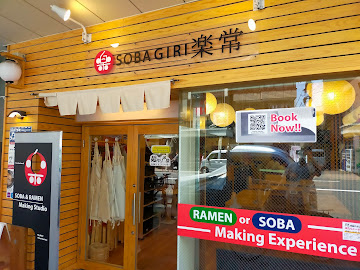In Japan, there’s a curious — and often amusing — phenomenon. After decades of commuting, working overtime, and climbing the corporate ladder, some Japanese salarymen retire and suddenly take up… making soba noodles.
Their friends chuckle. Their children roll their eyes.
"Oh no," they say, "He's turning into a soba master in retirement."
But behind the teasing lies something real: a quiet joy in working with your hands, and the meditative beauty of turning buckwheat flour into something nourishing and simple.
What is Soba?
Soba noodles are thin, made primarily from buckwheat flour, sometimes blended with wheat flour for elasticity. They can be served hot in broth or cold with a dipping sauce — enjoyed year-round but especially popular during seasonal and traditional occasions like New Year's Eve.
Tokyo is a city with a deep love for soba noodles. Despite being a bustling metropolis, it boasts countless soba specialty shops, from traditional long-established eateries to modern, inventive restaurants. The city’s soba culture is vibrant and diverse, reflecting a nationwide passion for this humble noodle.
Why Make It by Hand?
Soba-making (soba-uchi, or hand-making soba noodles) may seem straightforward: mix flour with water, knead, roll, and cut. But this simple process is surprisingly challenging. Your first attempt might produce crumbly dough, limp noodles, or unexpectedly thick strands.
Yet with each attempt, your hands begin to develop a subtle sensitivity — to water ratios, kneading rhythm, and dough elasticity — leading to steady improvement. This journey is much like Toyota’s kaizen philosophy (a famous idea of making steady, small improvements over time — and yes, it applies to noodles too). That’s why soba-making becomes a meaningful pursuit for many retirees and former office workers — a new “life’s work” that gives purpose after leaving their company careers.
The Dream of Opening a Soba Shop
Many enthusiasts find themselves dreaming of opening their own soba shop — sometimes a cozy spot in the countryside, other times a stylish eatery in the city. They talk about it with such passion and detail that their families, who were expecting a quiet retirement, start to worry just a little.
“Wait… he was supposed to relax, not start a second career!”
It’s a gentle kind of obsession, charming in its sincerity — a reminder that even after retirement, having a purpose can be deeply fulfilling.
Your Tokyo Soba-Making Experience
So, wouldn’t you be curious to try soba-uchi yourself — the very craft that captivates so many of Japan’s former corporate warriors?
Tokyo offers many workshops where you can learn hands-on from skilled instructors. These sessions typically last 1–2 hours and often end with you eating the soba you’ve made!
Recommended Tokyo Experiences:
• Tsukiji Soba Academy – Offers professional classes with English support in the heart of the city. Easy, beginner-friendly courses are also available for those who want a quick hands-on experience.
https://soba.specialist.co.jp/
• SOBAGIRI RAKUJYO – A soba-making experience shop newly opened near Kappabashi Kitchenware Town, close to Asakusa. It offers a convenient, short 30-minute session using a specially designed method.(See main photo above for the shop exterior.)
https://en.sobagiri.com
Final Thoughts
Soba-making is more than a culinary task. It’s a way to slow down, connect with tradition, and rediscover joy in the quiet rhythm of creation. While soba-making experiences exist all over Japan — including renowned soba regions like Nagano and Fukushima — Tokyo offers unique urban access to workshops and soba culture for city dwellers and travelers alike.
So the next time someone says, "I’ve started making soba," don’t laugh — just smile and say,
"You know, I’ve always wanted to try it too."

Comments
Post a Comment